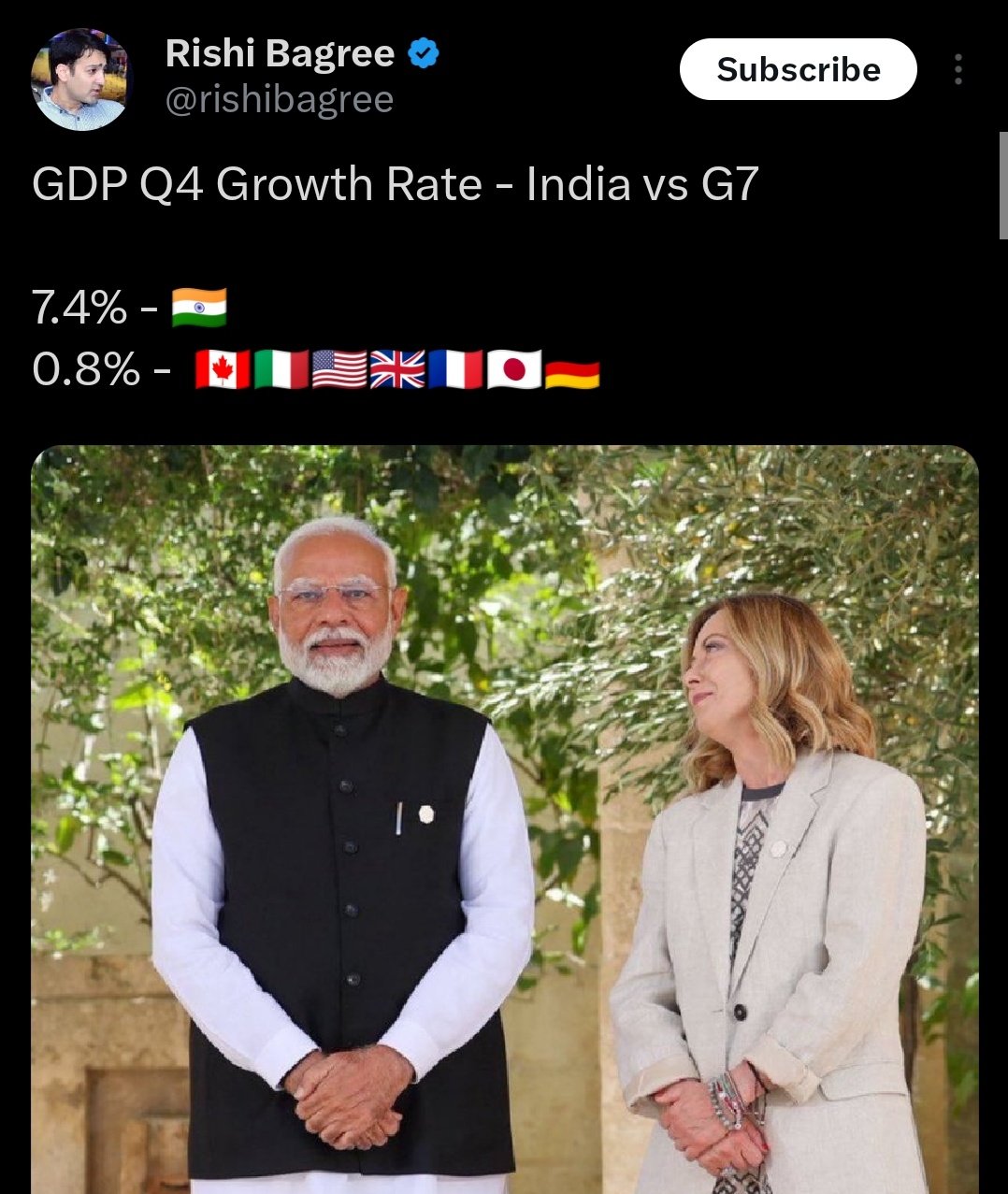
Despite the impressive GDP growth figures, India's average per capita income remains modest at $2,878 in 2025, a significant increase from around $1,455 in 2014. This near-doubling reflects substantial progress and efforts in economic reforms, formalization, and increased productivity.
 However, this figure still pales in comparison to the average per capita income of G7 nations, which stands at approximately $63,235. The contrast underscores a vast economic disparity that cannot be ignored. While india is growing rapidly, the wealth generated is distributed across a much larger population, diluting the per-person economic benefit.
However, this figure still pales in comparison to the average per capita income of G7 nations, which stands at approximately $63,235. The contrast underscores a vast economic disparity that cannot be ignored. While india is growing rapidly, the wealth generated is distributed across a much larger population, diluting the per-person economic benefit.This disparity highlights a key issue: high GDP growth does not automatically translate to higher living standards for the broader population. India’s development path is still constrained by structural issues such as income inequality, underemployment, rural distress, and access to quality education and healthcare. For the average Indian, rapid GDP expansion might mean more job opportunities or improved services, but unless this growth translates into better wages, reduced poverty, and equitable development, it remains a largely statistical achievement. Therefore, while macro indicators like GDP growth are important, a stronger focus on improving per capita income, reducing inequality, and enhancing human development outcomes is essential for ensuring that economic progress benefits all sections of society.




 click and follow Indiaherald WhatsApp channel
click and follow Indiaherald WhatsApp channel